The SJ-1 Head Skinner was a single-seat, gull-wing sports plane built in the US by brothers Earl and Jerry Adkisson of Tuscola, Illinois in 1957.

The Tupolev I-4 was a Soviet sesquiplane single-seat fighter. It was conceived in 1927 by Pavel Sukhoi as his first aircraft design for the Tupolev design bureau, and was the first Soviet all-metal fighter.

The Curtiss F7C Seahawk was a carrier-capable biplane fighter aircraft of the United States Navy Marine Corps in the late 1920s and early 1930s.

The Blohm & Voss Ha 142 was a German four-engined long-distance monoplane, developed to meet a Luft Hansa requirement for its transatlantic airmail service. The first of several prototypes flew on 11 October 1938 and they saw some service in other roles during the Second World War.
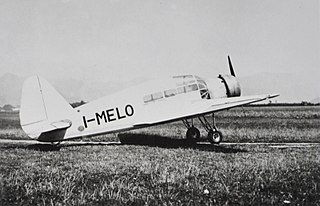
The Caproni PS.1, also known as the Pallavicino PS-1 and Caproni Ca.303, was an Italian four-seater sportsplane, designed and built specifically to compete in Challenge 1934, the European touring plane championships.

The Fokker D.XVI was a sesquiplane fighter aircraft developed in the Netherlands in the late 1920s.
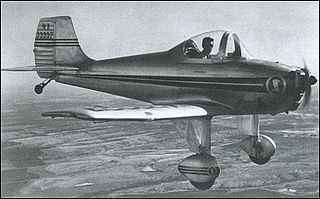
The Luscombe 10 was a single-seat sport aircraft built in the United States in 1945. It was a conventional, low-wing cantilever monoplane with fixed, tailwheel landing gear, designed for aerobatics. The wings, tail unit, and engine section were all adapted from the Luscombe 8, while the fuselage center section was an all-new design, relocating the Model 8's wings from a high to low position.

The Driggs Dart was an American-built light sporting aircraft of the late 1920s.
The Nakajima B3N was a prototype Japanese carrier-based torpedo-bomber aircraft of the 1930s. A single-engined biplane with a crew of three, it was unsuccessful, only two being built.

The Tebaldi-Zari was an Italian fighter prototype of 1919. The Breda company later acquired the rights to it.

The Curtiss O-40 Raven was an American observation aircraft of the 1930s which was built and used in small numbers. A single example of the YO-40, a single-engined Sesquiplane with a retractable undercarriage was built, followed by four examples of a modified monoplane version, the O-40B, which remained in use until 1939.
The Solar MS-1 was an American prototype all-metal sesquiplane airliner built in 1930.
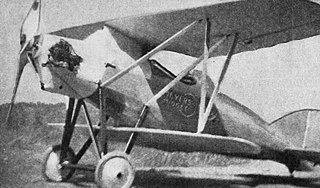
The Meyers Midget was a one-off small, low-powered, sporting single-seat sesquiplane, designed and built in the United States in 1926, incorporating several innovative structural features.

The Pander E was the first indigenous Dutch training aircraft, used by clubs and also privately owned. A two-seat, single-engine biplane, 17 were built in the Netherlands from 1926 with engines of increasing power.

The Hanriot H.26 was a French single seat fighter aircraft prototype completed in 1923. Only one was built.
The Caudron Type B was a 1911 development of the earliest Caudron type, the Caudron Type A, with a nacelle style fuselage and more powerful engine. Initially an equal span biplane, it was modified into a sesquiplane.

The Wallace Touroplane was a late 1920s U.S. three seat, high wing cabin monoplane. About 20 were built.
The Hodkinson HT-1 was a U.S., eight place, three-engined sesquiplane, first flown in 1929. Despite an order for five, only one had been completed before Hodkinson Aircraft went bankrupt near the start of the Great Depression. It operated in Guatemala for several years.
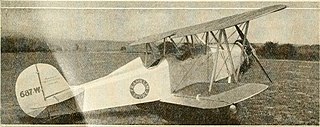
The Franklin Sport is a two seat sport and training biplane built in the U.S. in 1930. Several different engines, in the power range 55–90 hp (41–67 kW), were fitted. Two remained airworthy in 2011.
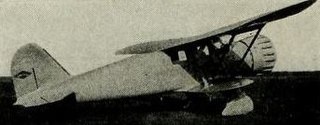
The Laird LC-EW was a six seat cabin sesquiplane designed for the industrialist George Horton. It first flew in 1934.















